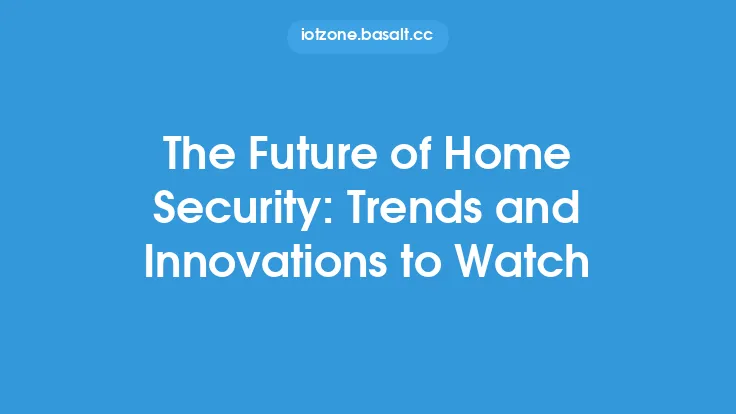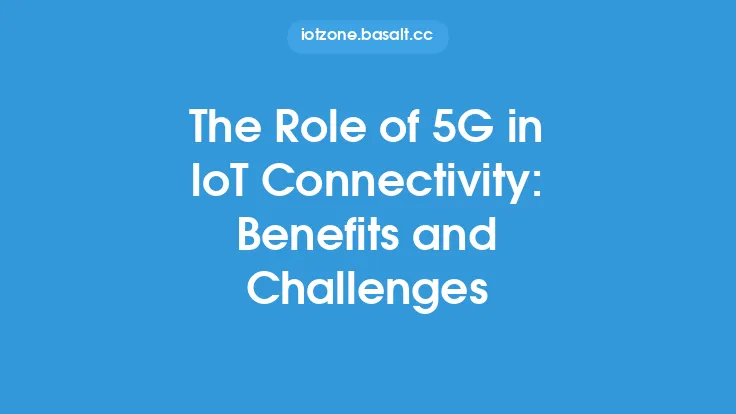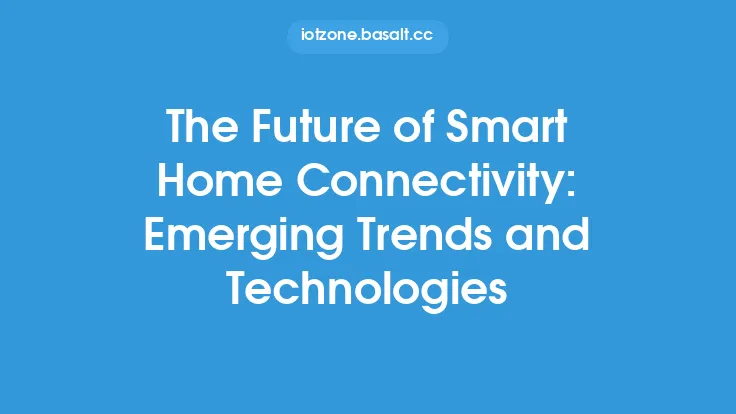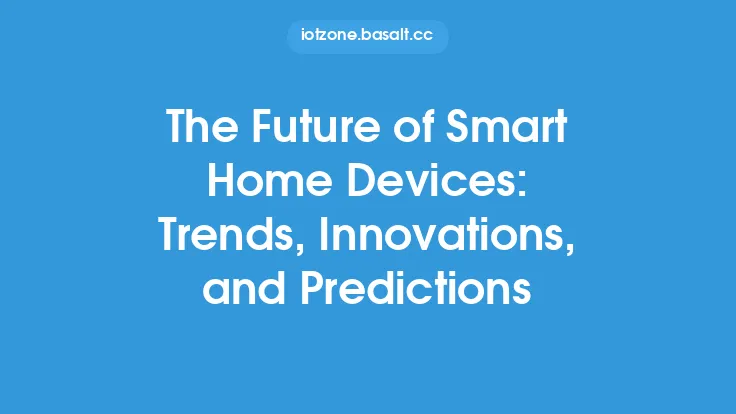The advent of 5G networks is poised to revolutionize the Internet of Things (IoT) landscape, enabling unprecedented levels of connectivity, performance, and innovation. As the world becomes increasingly dependent on connected devices, the need for faster, more reliable, and more efficient communication networks has never been more pressing. 5G networks are designed to meet this demand, offering a significant leap forward in terms of speed, latency, and capacity compared to their 4G predecessors.
Introduction to 5G Networks
5G networks operate on a new radio frequency spectrum, utilizing a range of frequencies between 600 MHz and 86 GHz. This allows for a much larger bandwidth, enabling faster data transfer rates and lower latency. The 5G network architecture is also designed to be more flexible and scalable, with a focus on software-defined networking (SDN) and network functions virtualization (NFV). This enables network operators to quickly deploy and manage new services, as well as to optimize network performance in real-time.
Key Features of 5G Networks
Several key features of 5G networks make them particularly well-suited to supporting the growing demands of IoT applications. These include:
- Ultra-low latency: 5G networks offer latency as low as 1 ms, enabling real-time communication and control of devices.
- High-speed data transfer: 5G networks support data transfer rates of up to 20 Gbps, enabling the rapid transfer of large amounts of data.
- Massive machine-type communications: 5G networks are designed to support a vast number of devices, making them ideal for large-scale IoT deployments.
- Ultra-reliable low-latency communications: 5G networks offer ultra-reliable communication, with packet loss rates as low as 10^-5, enabling mission-critical applications.
Impact on IoT Applications
The impact of 5G networks on IoT applications will be significant, enabling a wide range of new use cases and enhancing existing ones. Some examples include:
- Smart cities: 5G networks will enable the efficient management of smart city infrastructure, including traffic management, energy grids, and public safety systems.
- Industrial automation: 5G networks will enable the real-time control of industrial equipment, improving efficiency and reducing downtime.
- Transportation systems: 5G networks will enable the development of intelligent transportation systems, including autonomous vehicles and smart traffic management.
- Healthcare: 5G networks will enable the remote monitoring of patients, as well as the rapid transfer of medical images and other data.
Technical Requirements for 5G IoT
To support the demands of IoT applications, 5G networks must meet certain technical requirements. These include:
- Network slicing: 5G networks must be able to support multiple independent networks, each with its own set of performance characteristics.
- Quality of service (QoS): 5G networks must be able to guarantee a certain level of performance, including latency, throughput, and packet loss rate.
- Security: 5G networks must be designed with security in mind, including the use of encryption, authentication, and access control.
- Device management: 5G networks must be able to support the management of large numbers of devices, including over-the-air updates and remote configuration.
Challenges and Limitations
While 5G networks offer many benefits for IoT applications, there are also several challenges and limitations that must be addressed. These include:
- Cost: The cost of deploying and maintaining 5G networks can be high, particularly in rural or remote areas.
- Interoperability: 5G networks must be able to interoperate with existing IoT devices and systems, which can be a complex challenge.
- Security: 5G networks introduce new security risks, including the potential for hacking and data breaches.
- Regulation: The regulation of 5G networks is still evolving, and there may be uncertainties around issues such as spectrum allocation and net neutrality.
Conclusion
In conclusion, 5G networks have the potential to revolutionize the IoT landscape, enabling unprecedented levels of connectivity, performance, and innovation. While there are challenges and limitations that must be addressed, the benefits of 5G networks for IoT applications are clear. As the world becomes increasingly dependent on connected devices, the need for fast, reliable, and efficient communication networks has never been more pressing. 5G networks are poised to meet this demand, enabling a wide range of new use cases and enhancing existing ones. As the technology continues to evolve, it will be exciting to see the impact that 5G networks have on the future of IoT.





